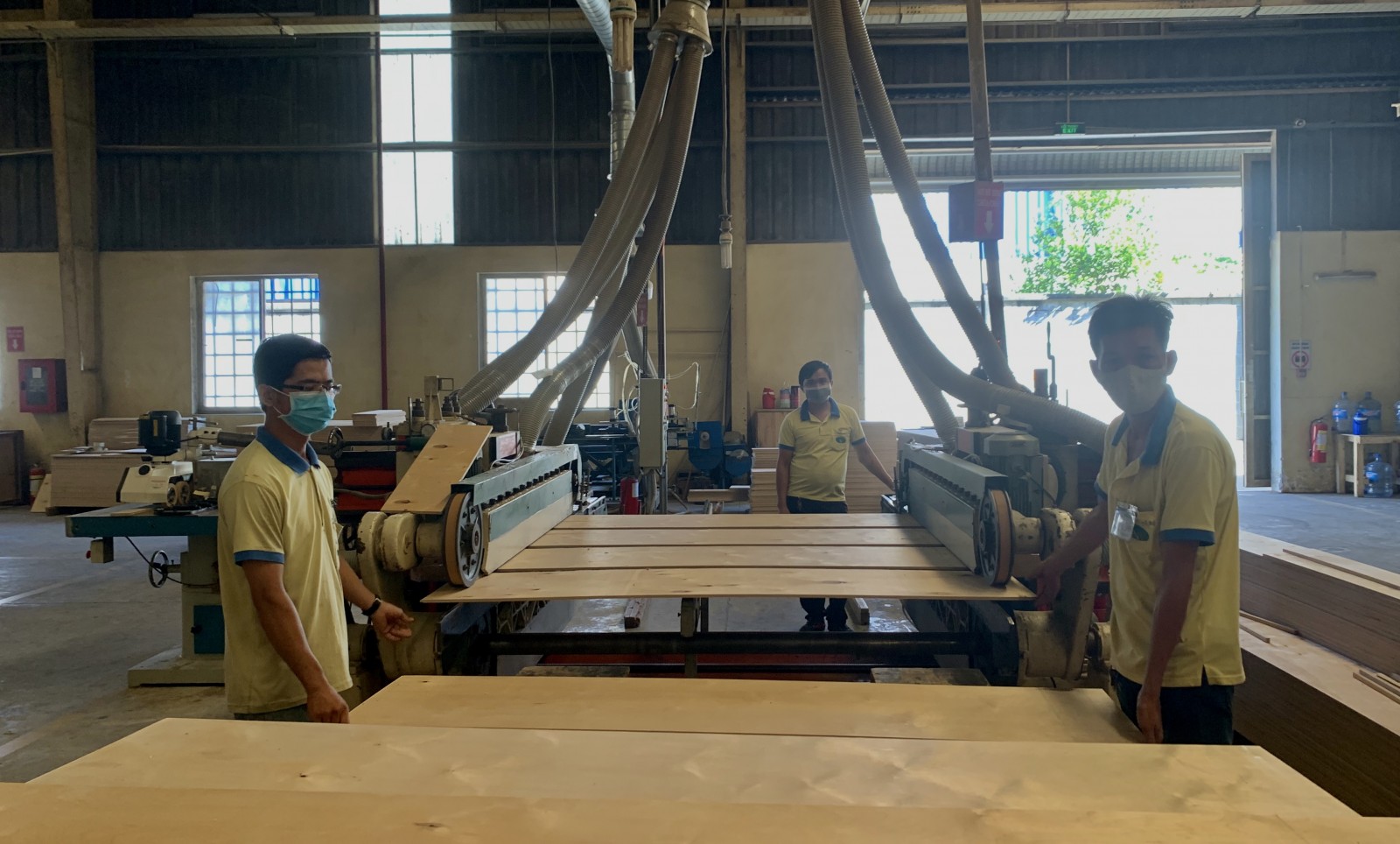The wood industry needs a well-organized strategy to restore production
Pandemic control, production returned, Binh Duong wood industry needs to prepare what conditions to minimize risks arising? What opportunities and market trends require businesses to seize?

Wood production at Sao Nam Company (Tan Uyen Town)
Remove difficulties
In 2020, Vietnam's timber industry aims to reach 12 billion USD in export turnover, but due to the impact of the Covid-19 epidemic, the production and export situation of the wood industry is facing many difficulties. Survey of Binh Duong Wood Processing Association (BIFA) shows that 100% of enterprises are affected. In important markets for importing wooden furniture of Binh Duong, including the US, Japan, China, South Korea and the EU (these 5 markets account for over 80% of the total export turnover of the whole industry). Strict policies to control widespread epidemics, such as border closures and non-essential chain stores, are closed. This leads to serious supply chain failures.
The Covid-19 pandemic also had an impact on the import of wood materials, processing and domestic consumption. Specifically, the import of raw wood from Africa - the largest source of tropical timber for Vietnam has stopped. Imports from temperate timber decreased by 70%. The pandemic caused rising prices for wood materials and transports. Production and business of craft villages decreased by 80%. About 50 - 60% of sawmills using domestic plantations must stop operations. Consumer demand in residential and public projects is now stopping. In addition to difficulties in raw materials and export, Vietnam's wood industry also faces double difficulties, which is the possibility of anti-dumping duty on wooden boards exported to the US and South Korea. The initiative to produce MDF products from Vietnam.
In recent years, in an effort to reduce the impact of the epidemic on economic sectors, including timber industry, the Government has quickly issued policies and solutions on fiscal and commercial credit policies. Social security ... Most recently, the Ministry of Finance has absorbed and brought the sub-sector of wood processing and bamboo and bamboo products into the draft decree to submit to the Government to continue proposing to upgrade the fiscal package to support businesses. , including timber enterprises up to nearly VND 180,000 billion, 6 times the initial estimate.
Mr. Nguyen Liem, Chairman of the Board of Lam Viet Joint Stock Company (Tan Uyen Town), said that the company now has to reduce its operating capacity to 40%. But the biggest problem is that the production recovery is expected to take a whole year to operate normally like before the epidemic ... Mr. Liem hopes the government's support package will be quickly deployed to help businesses stand firm in this time.
Basic changes in intrinsic
At the online seminar: "Recovery - Acceleration - Breakthrough - Sustainable development of timber industry in the post-epidemic period" organized by Forest Trends and national timber associations in late April, Enterprises, organizations, ministries and branches have together sought "the answer" to the question of what should the wood industry do to accelerate after the epidemic?
Dr. Vo Tri Thanh, former Deputy Director of the Central Institute for Economic Management and Research, said that in the context of uncertainty due to disease, climate change, as well as from many other risks, this is the time to Businesses rethink, redesign activities, learn how to manage risk. Businesses are not too pessimistic but not too optimistic, they need to be flexible, calm and follow the trend. Although the immediate difficulties are real, businesses also identify risks. In this shift, it is possible to make breakthroughs in the development of the timber industry in the future. According to a representative of BIFA, the association is promoting many online meeting channels with international trading partners to learn about market developments. From that forecast and information to businesses time of market recovery, predict behavior and new consumer trends.
It is important that timber enterprises need fundamental changes in defining product lines and strategic markets when they want to minimize risks. Specifically, Mr. Do Xuan Lap, Chairman of the Vietnam Association of Wood and Forest Products (Viforest), said that the structure of Vietnam's wood product line is currently unreasonable, producing products without great demand and not soar in the future. Since then, to restore production, businesses need to change the product line structure according to market demand. Currently, kitchen, bathroom and dressing table furniture accounts for about 60% of the total demand for all kinds of wooden furniture worldwide. This is a strategic product line.
When an epidemic occurs, the supply chain for strategic wood products does not change too much, while the demand for other wood products groups is almost completely gone. The pandemic also suggests that the industry needs to shift back to sales. Traditional channels (offline) need to be changed, in order to reduce risks in integration and in line with the world trade trend (online). In addition, the wood industry needs to form and promote links between businesses, build domestic supply chains, and develop auxiliary industries. The impact of the Covid-19 epidemic showed that Vietnam's current export supply chain for wooden furniture is not good, depending in part on imported raw materials and accessories, especially from China.
Permanent Deputy Minister of Agriculture and Rural Development Ha Cong Tuan analyzed, the impact of the disease also showed that the resistance of the domestic market is very high. Prioritizing the development of the domestic market in the future is one of the strategies to help the wood industry break through.
Reported by Tieu My – Translated by Vi Bao

